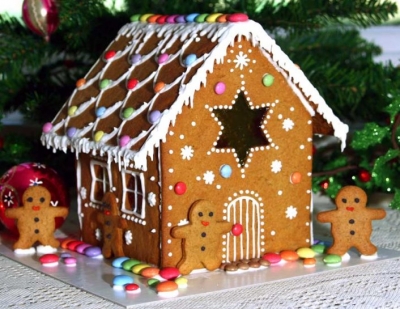
The tradition of decorated gingerbread houses began in Germany in the early 1800s, supposedly popularised after the not-so-Christmassy fairytale of Hansel and Gretel was published in 1812. The Grimms’ original fairy tale includes the line: “When they came nearer they saw that the house was built of bread, and roofed with cakes, and the window was of transparent sugar.” (In later versions it became gingerbread, rather than just bread.) Inspired by the story, German bakers began to craft small decorated houses from lebkuchen, spiced honey biscuits.
The origins of gingerbread are not precise. Ginger root was first cultivated in China around 5,000 years ago, and was thought to have medicinal and magical properties. When its usefulness as a preservative was discovered is unclear, but some food historians say that the first known recipe for gingerbread dates from around 2400 BC in Greece. Others trace its history to 992 AD, when Armenian monk Gregory of Nicopolis is thought to have taught Christian bakers in France how to make it. Later references include a gingerbread guild in Germany, probably formed in the 15th century to protect the rights of certain bakers. At around the same time, nuns in Sweden were baking gingerbread to ease indigestion.
In 2017, Jon Lovitch, sous-chef at the New York Marriott Marquis Hotel, broke the record for the fourth time for the “largest gingerbread village”. It was displayed at the New York Hall of Science. Another contender was the Pepperkakebyen (Gingerbread Town) in Bergen, Norway (on display until 31 December, £9). In 2015 it had more than 2,000 individual buildings that lit up, as well as ships, cars and a train. But only 1,020 of the structures were made of gingerbread, and it was denied the record for including non-edible components.
The walled medieval town of Dinkelsbühl, southern Germany, is often thought of as a real-life town of gingerbread houses. Its picturesque and well-preserved historic centre has gabled half-timbered buildings in yellow and peach, a church, a little town square and cobbled streets.
Credit : The Guardian
Picture Credit : Google




